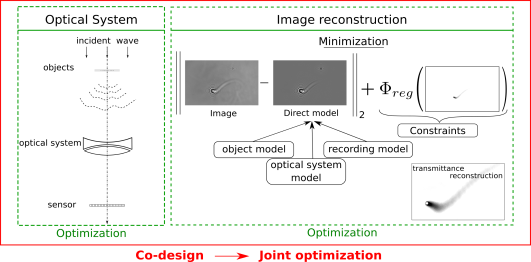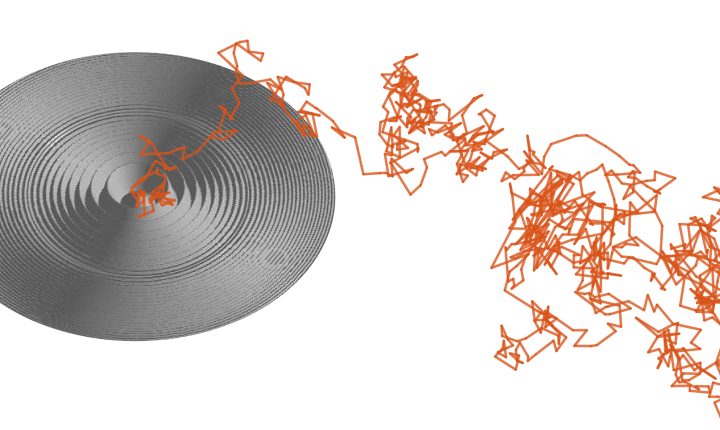Optical Design and Image Reconstruction
Combining imaging techniques and reconstruction algorithms extends the capabilities of conventional imaging. By working from optical system design to experimental set-ups, we can improve imaging for large telescopes, develop color lensless microscopy for microbiology, fluorescence and spectral imaging for color appearance. Thanks to an inverse problems approach, we can achieve a better reconstruction in digital holography and an improved image restauration in radar teledetection. A special focus is placed on the co-design of 3D imaging systems where the optical system and the image processing are jointly optimized.
In unconventional imaging, measurements are indirect: to retrieve the desired information, image reconstruction techniques are necessary. Reconstruction is an “inverse problem”: an optical model of the data formation, regularization terms and constraints are used to formulate the reconstruction as a minimization problem. The design an unconventional imaging system requires to master two complementary skills: the optical design of the system and a fine optical modeling of data formation, including the noise sources, and numerical optimization techniques to fit the model to the data during the reconstruction step.

The best performance is achieved by performing a joint optimization of the optical system and the image reconstruction technique in a co-design approach. Hereafter are detailed examples dealing with optical design, digital holography and synthetic aperture radar imagery:
- Optical instrumentation for astronomy
- Freeforms
- Digital holographic microscopy for biology
- Synthetic aperture radar (SAR) image restoration

